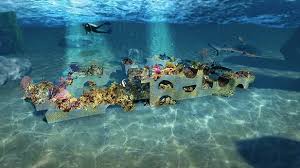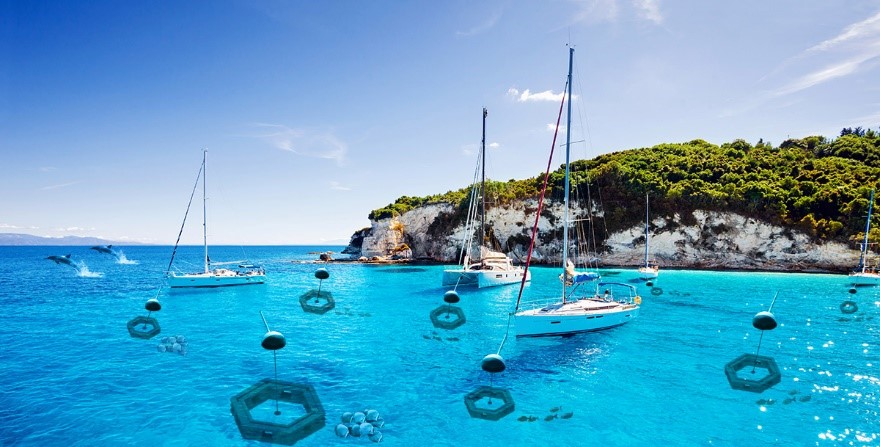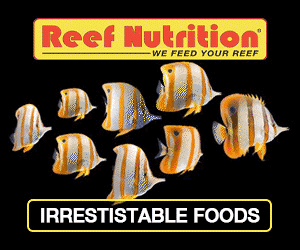Reef Life Restoration works with groups, organizations, and companies around the world to do exactly what its name implies: restore damaged or struggling reefs.
To this end, their team of scientists has created a unique substrate material that they are then able to cast into a multitude of shapes and forms, including creative pieces for diving sites and blocks that assemble like LEGOs, quickly rebuilding a reef site that took decades (or more) to grow. From their website:

“Reef Life Restoration scientists work on diverse mineral and nanoparticle coral compatible growth compounds within our marine cell matrices. Conductivity upgrades and color formulations also assist in more rapid coral growth. These unique formulas can be easily cast into the reef structures we have created for a site specific problem. This results in quicker coral development, on marine life friendly structures that can be easily installed globally.
The bio-compatibility and bio-mimicry attributes of developed Reef Life substrates can be tailored by the design for required chemical composition and pH, addition of eco-friendly mineral additive(s), by formation of desired micro- and macro- structures, using color, and also introduction of porosity (by application of porous aggregates, application of soluble ingredients – “coral building blocks,” etc.) The application of nano-compounds to improve the performance of oceanic substrate systems with high volume of mineral additives is part of our scientific expertise.
A complete evaluation of the mechanical performance (bond, compressive strength development, flexural strength, etc.) of marine cell growth compounds with different content of mineral additives is [conducted] in order to meet site requirements.”
The compound’s ingredients include aragonite, vaterite and magnesium dolomite, which protect spawned coral eggs within their highly textured surfaces. A volcanic igneous rock called scoria provides vitamin vitality to the mix.
“Reef Life scientists use these as specific growth catalysts, mimicking the complexity and biodiverse compounds of natural coral reefs. It is also very important to be able to match substrate pH with the surrounding aqueous environment pH for ideal coral growth conditions. Unlike Portland cement, customizable materials mixtures give a handle on pH control which allows for pH matching to local environment, giving tailored coral growth environments.”
The company is dedicated to saving marine environments, and their current project is in the Caribbean, building and installing safe mooring stations in sensitive, but highly-visited areas. The United Nations Environment Programme has a serious focus on the hashtag #AlternativesToAnchoring , and for good reason:
“If even only 5% of the reef is damaged by these anchors, and the reef manages to grow at an average of 5% a year, the anchor damage is already negating any growth of the ecosystem. But usually anchors do far more than 5% damage. It isn’t unusual to find more than 20% damage along coral reefs from anchors and anchor chains. This also affects areas surrounding the reefs; in high tourist seasons, anchors have been reportedly destroyed over 70% of seagrass beds.

This is why the installation of mooring buoys is so important. Mooring buoys are permanent structures rooted into the sediment to which boats can tie up, eliminating the need to anchor each time they visit a popular site.
Wonderful dive sites will only stay wonderful for as long as we care for them. Negligence in any regard can quickly and irreversibly destroy entire underwater communities.”
Well stated, and fantastic work by the team at Reef Life Restoration. It is companies like this that give me hope for the future of our beautiful oceans (and therefore, all life on Earth)
To find out more, visit their website, HERE










0 Comments